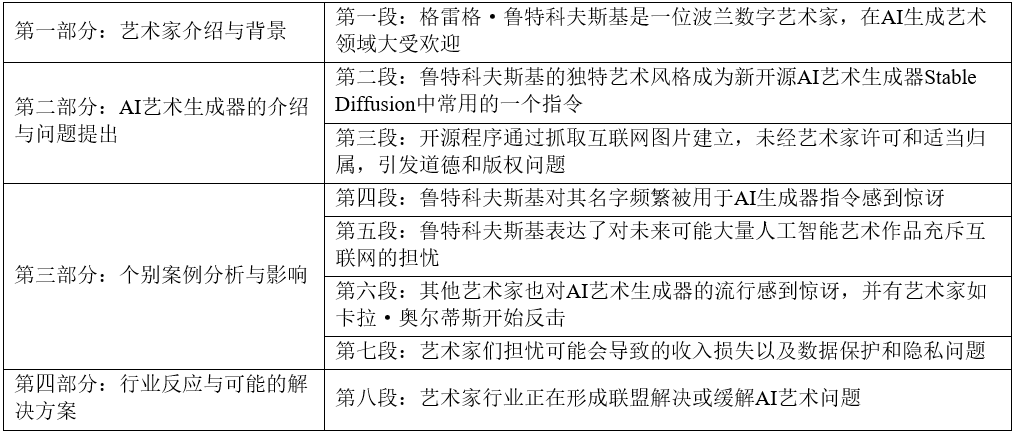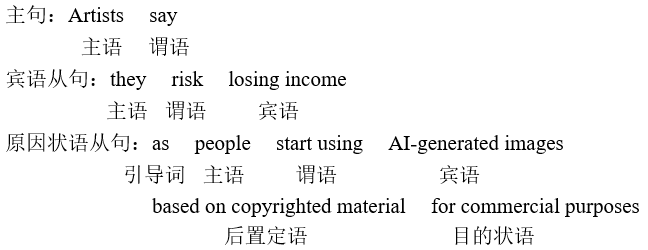A Polish digital artist who uses classical painting styles to create dreamy fantasy landscapes, Greg Rutkowski has made illustrations for games such as Dungeons & Dragons and Magic: The Gathering. And he’s become a sudden hit in the new world of text-to-image AI generation.
His distinctive style is now one of the most commonly used prompts in the new open-source AI art generator Stable Diffusion. The tool, along with other popular image-generation AI models, allows anyone to create impressive images based on text prompts. For example, type in “Wizard with sword and a glowing orb of magic fire fights a fierce dragon Greg Rutkowski,” and the system will produce something that looks not a million miles away from works in Rutkowski’s style.
But these open-source programs are built by scraping images from the internet, often without permission and proper attribution to artists. As a result, they are raising tricky questions about ethics and copyright. And artists like Rutkowski have had enough.
According to the website Lexica, which tracks over 10 million images and prompts generated by Stable Diffusion, Rutkowski’s name has been used as a prompt around 93,000 times. Rutkowski was initially surprised but thought it might be a good way to reach new audiences. Then he tried searching for his name to see if a piece he had worked on had been published. The online search brought back work that had his name attached to it but wasn’t his.
“It’s been just a month. What about in a year? I probably won’t be able to find my work out there because the internet will be flooded with AI art,” Rutkowski says. “That’s concerning.”
Other artists besides Rutkowski have been surprised by the apparent popularity of their work in text-to-image generators—and some are now fighting back. Karla Ortiz, an illustrator based in San Francisco who found her work in Stable Diffusion’s data set, has been raising awareness about the issues around AI art and copyright.
Artists say they risk losing income as people start using AI-generated images based on copyrighted material for commercial purposes. But it’s also a lot more personal, Ortiz says, arguing that because art is so closely linked to a person, it could raise data protection and privacy problems.
“There is a coalition growing within artist industries to figure out how to tackle or mitigate this,” says Ortiz. The group is in its early days of mobilization, which could involve pushing for new policies or regulation. One suggestion is that AI models could be trained on images in the public domain, and AI companies could forge partnerships with museums and artists, Ortiz says.
1. What can be learned about Rutkowski from the first two paragraphs?
2. The problem with open-source AI art generators is that they ________.
3. After searching online, Rutkowski found ________.
4. According to Ortiz, AI companies are advised to ________.
5. What is the text mainly about?
问题1选项
A.He is enthusiastic about using AI models.
B.He is popular with users of an AI art generator.
C.He attracts admiration from other illustrators.
D.He specializes in classical painting digitalization.
问题2选项
A.lack flexibility in responding to prompts
B.produce artworks in unpredictable styles
C.make unauthorized use of online images
D.collect user information without consent
问题3选项
A.a unique way to reach audiences
B.a new method to identify AI images
C.AI-generated work bearing his name
D.heated disputes regarding his copyright
问题4选项
A.campaign for new policies or regulation
B.offer their services to public institutions
C.strengthen their relationships with AI users
D.adopt a different strategy for AI model training
问题5选项
A.Artists’ responses to AI art generation.
B.AI’s expanded role in artistic creation.
C.Privacy issues in the application of AI.
D.Opposing views on AI development.
第1题:B
第2题:C
第3题:C
第4题:D
第5题:A
第1题:
【整体分析】
来源:MIT Technology Review《麻省理工科技评论》于2022年9月16日刊登的文章This Artist is Dominating AI-generated Art. And He’s not Happy About It.(这位艺术家正在主导人工智能生成的艺术。他对此很不高兴。)。
主题:本文探讨了波兰数字艺术家格雷格·鲁特科夫斯基的独特艺术风格如何在AI艺术生成器Stable Diffusion中被广泛使用,引发了关于版权和道德的问题。同时,文章也描述了艺术家们对于自己作品在未经允许的情况下被用于训练AI的担忧,并展示了他们为解决这一问题所采取的行动。
结构:

【试题解析】
【选项释义】
What can be learned about Rutkowski from the first two paragraphs? 从前两段中可以了解到鲁特科夫斯基的哪些情况?
A. He is enthusiastic about using AI models. A. 他热衷于使用人工智能模型。
B. He is popular with users of an AI art generator. B. 他很受人工智能艺术生成器用户的欢迎。
C. He attracts admiration from other illustrators. C. 他吸引了其他插画家的钦佩。
D. He specializes in classical painting digitalization. D. 他擅长将古典绘画数字化。
【考查点】事实细节题。
【解题思路】根据题干关键词Rutkowski from the first two paragraphs可以定位到文章第一段第二句And he’s become a sudden hit in the new world of text-to-image AI generation.(在文本到图像的AI生成新领域,他突然大受欢迎。)和第二段第一句His distinctive style is now one of the most commonly used prompts in the new open-source AI art generator Stable Diffusion.(他的独特风格现已成为新的开源人工智能艺术生成器Stable Diffusion中最常用的指令之一。),说明鲁特科夫斯基在人工智能艺术生成器用户中很受欢迎。因此B选项“他很受人工智能艺术生成器用户的欢迎。”正确。
【干扰项排除】
A选项“他热衷于使用人工智能模型。”,文章说的是他对人工智能生成的作品使用他名字的频率感到担忧,属于反向干扰;
C选项“他吸引了其他插画家的钦佩。”在文中没有提及,属于无中生有;
D选项“他擅长将古典绘画数字化。”,文章说的是他使用古典绘画风格创作梦幻般的幻想景观,而不是从事古典绘画的数字化,属于曲解原文。
第2题:
【选项释义】
The problem with open-source AI art generators is that they ________. 开放源代码的人工智能艺术生成器的问题在于它们________。
A. lack flexibility in responding to prompts A. 在响应指令方面缺乏灵活性
B. produce artworks in unpredictable styles B. 生成的艺术作品风格难以预测
C. make unauthorized use of online images C. 未经授权使用在线图像
D. collect user information without consent D. 未经同意收集用户信息
【考查点】事实细节题。
【解题思路】根据题干关键词open-source AI art generators可以定位到文章第三段第一句But these open-source programs are built by scraping images from the internet, often without permission and proper attribution to artists.(但是,这些开源代码程序都是通过从互联网上抓取图片建立起来的,通常没有得到艺术家的许可和适当的归属。),说明这些开源人工智能艺术生成器使用在线图像时没有得到艺术家的授权。因此C选项“未经授权使用在线图像”正确。
【干扰项排除】
A选项“在响应指令方面缺乏灵活性”和D选项“未经同意收集用户信息”在文中没有提及,属于无中生有;
B选项“生成的艺术作品风格难以预测”,由the system will produce something that looks not a million miles away from works in Rutkowski’s style(系统会生成与鲁特科夫斯基的风格相差无几的作品)可知,它们可以根据指令生成类似于某些艺术家的风格,属于反向干扰。
第3题:
【选项释义】
After searching online, Rutkowski found ________. 在网上搜索后,鲁特科夫斯基发现________。
A. a unique way to reach audiences A. 一种吸引受众的独特方式
B. a new method to identify AI images B. 一种识别人工智能图像的新方法
C. AI-generated work bearing his name C. 以他的名字命名的人工智能作品
D. heated disputes regarding his copyright D. 有关其版权的激烈争议
【考查点】事实细节题。
【解题思路】根据题干关键词searching online可以定位到文章第四段最后一句The online search brought back work that had his name attached to it but wasn’t his.(网上搜索的结果是,有作品署了他的名字,但不是他创作的。),说明鲁特科夫斯基发现了带有他名字的AI生成作品。因此C选项“以他的名字命名的人工智能作品”正确。
【干扰项排除】
A选项“一种吸引受众的独特方式”,虽然文章提到他最初认为这可能是吸引受众的好方法,但这与他在线搜索的结果无关,属于出处错位;
B选项“一种识别人工智能图像的新方法”在文中没有提及,属于无中生有;
D选项“有关其版权的激烈争议”,虽然文章提到鲁特科夫斯基对AI生成的作品感到担忧,但没有到激烈争议的程度,属于过度推断。
第4题:
【选项释义】
According to Ortiz, AI companies are advised to ________. 根据奥尔蒂斯的说法,建议人工智能公司________。
A. campaign for new policies or regulation A. 争取新的政策或法规
B. offer their services to public institutions B. 向公共机构提供服务
C. strengthen their relationships with AI users C. 加强与人工智能用户的关系
D. adopt a different strategy for AI model training D. 采取不同的人工智能模型培训战略
【考查点】推理判断题。
【解题思路】根据题干关键词AI companies可以定位到文章第八段最后一句One suggestion is that AI models could be trained on images in the public domain, and AI companies could forge partnerships with museums and artists, Ortiz says.(奥尔蒂斯说,一个建议是,人工智能模型可以在公共领域的图像上进行训练,人工智能公司可以与博物馆和艺术家建立合作关系。)说明奥尔蒂斯建议人工智能公司采用不同的策略来训练模型,而不是使用有版权的图像。因此D选项“采取不同的人工智能模型培训战略”正确。
【干扰项排除】
A选项“争取新的政策或法规”,文章说的是艺术家可能推动新政策或法规,而不是对人工智能公司的建议,属于张冠李戴;
B选项“向公共机构提供服务”和C选项“加强与人工智能用户的关系”在文中没有提及,属于无中生有。
第5题:
【选项释义】
What is the text mainly about? 这篇文章主要讲了什么?
A. Artists’ responses to AI art generation. A. 艺术家对人工智能艺术生成的反应。
B. AI’s expanded role in artistic creation. B. 人工智能在艺术创作中作用的扩大。
C. Privacy issues in the application of AI. C. 人工智能应用中的隐私问题。
D. Opposing views on AI development. D. 关于人工智能发展的对立观点。
【考查点】主旨大意题。
【解题思路】本文首先提到鲁特科夫斯基如何反应AI生成艺术品使用他们作品的风格和名字而未经授权的情况,接着指出AI生成器通过抓取在线图像进行训练,导致艺术家们担心他们的作品被模糊化和侵权的问题,艺术家们正在采取行动,推动关于AI艺术和版权的讨论,并建议AI公司采用更道德的训练方法。由此可知,文章总体反映了艺术家对AI艺术生成所带来的伦理和法律问题的关注和应对。因此A选项“艺术家对人工智能艺术生成的反应。”正确。
【干扰项排除】
B选项“人工智能在艺术创作中作用的扩大。”和C选项“人工智能应用中的隐私问题。”只在文章的某部分提及,不能概括全文的主旨大意,属于以偏概全;
D选项“关于人工智能发展的对立观点。”在文中没有提及,属于无中生有。
【重点词汇】

【长难句分析】
1. Karla Ortiz, an illustrator based in San Francisco who found her work in Stable Diffusion’s data set, has been raising awareness about the issues around AI art and copyright.
【结构分析】

【补充分析】
① an illustrator based in San Francisco作同位语,用来补充说明主语卡拉·奥尔蒂斯,提供更多关于她的身份和背景的信息,即一名住在旧金山的插画家;
② who引导定语从句修饰an illustrator,进一步提供了关于卡拉·奥尔蒂斯的信息,即她在Stable Diffusion的数据集中发现了自己的作品,说明了她为什么会关注AI艺术和版权问题。
【参考译文】卡拉·奥尔蒂斯是旧金山的一名插画家,她在Stable Diffusion的数据集中发现了自己的作品,她一直在提高人们对人工智能艺术和版权问题的认识。
2. Artists say they risk losing income as people start using AI-generated images based on copyrighted material for commercial purposes.
【结构分析】

【补充分析】
① they risk losing income作宾语从句,充当动词say的宾语,表达了艺术家们所说的内容,即他们面临失去收入的风险;
② as引导原因状语从句,解释了艺术家们面临失去收入风险的原因,即人们开始将基于受版权保护材料的人工智能生成图像用于商业目的。
【参考译文】艺术家们说,随着人们开始将基于受版权保护材料的人工智能生成图像用于商业目的,他们的收入有可能会受到损失。
【全文翻译】
格雷格·鲁特科夫斯基是一位波兰数字艺术家,他用古典绘画风格创造出梦幻般的奇幻景观,曾为《龙与地下城》和《万智牌》等游戏制作插图。在文本到图像的AI生成新领域,他突然大受欢迎。
他的独特风格现已成为新的开源人工智能艺术生成器Stable Diffusion中最常用的指令之一。该工具与其他流行的图像生成AI模型一样,允许任何人根据文本指令创造令人印象深刻的图像。例如,输入“手持宝剑和魔法火球的巫师与凶猛的巨龙搏斗,格雷格·鲁特科夫斯基”,系统就会生成与鲁特科夫斯基的风格相差无几的作品。
但是,这些开源代码程序都是通过从互联网上抓取图片建立起来的,通常没有得到艺术家的许可和适当的归属。因此,它们引发了有关道德和版权的棘手问题。像鲁特科夫斯基这样的艺术家已经受够了。
根据Lexica网站的统计,该网站追踪了超过1000万张由Stable Diffusion生成的图像和指令,鲁特科夫斯基的名字被用作指令的次数约为9.3万次。鲁特科夫斯基起初很惊讶,但认为这可能是吸引新受众的好方法。然后,他试着搜索自己的名字,看看自己的作品是否已经发表。网上搜索的结果是,有作品署了他的名字,但不是他创作的。
“才过了一个月。一年后呢?我可能就找不到我的作品了,因为互联网上将充斥着人工智能艺术,”鲁特科夫斯基说。“这令人担忧。”
除了鲁特科夫斯基之外,其他艺术家也对自己的作品在文本到图像生成器中的明显流行感到惊讶——有些人现在正在进行反击。卡拉·奥尔蒂斯是旧金山的一名插画家,她在Stable Diffusion的数据集中发现了自己的作品,她一直在提高人们对人工智能艺术和版权问题的认识。
艺术家们说,随着人们开始将基于受版权保护材料的人工智能生成图像用于商业目的,他们的收入有可能会受到损失。但奥尔蒂斯说,这也是一个更加个人化的问题,她认为,由于艺术与人的联系如此紧密,可能会引发数据保护和隐私问题。
奥尔蒂斯说:“艺术家行业内部正在形成一个联盟,共同研究如何解决或缓解这一问题。”该联盟正处于初期动员阶段,可能涉及推动新的政策或法规。奥尔蒂斯说,一个建议是,人工智能模型可以在公共领域的图像上进行训练,人工智能公司可以与博物馆和艺术家建立合作关系。